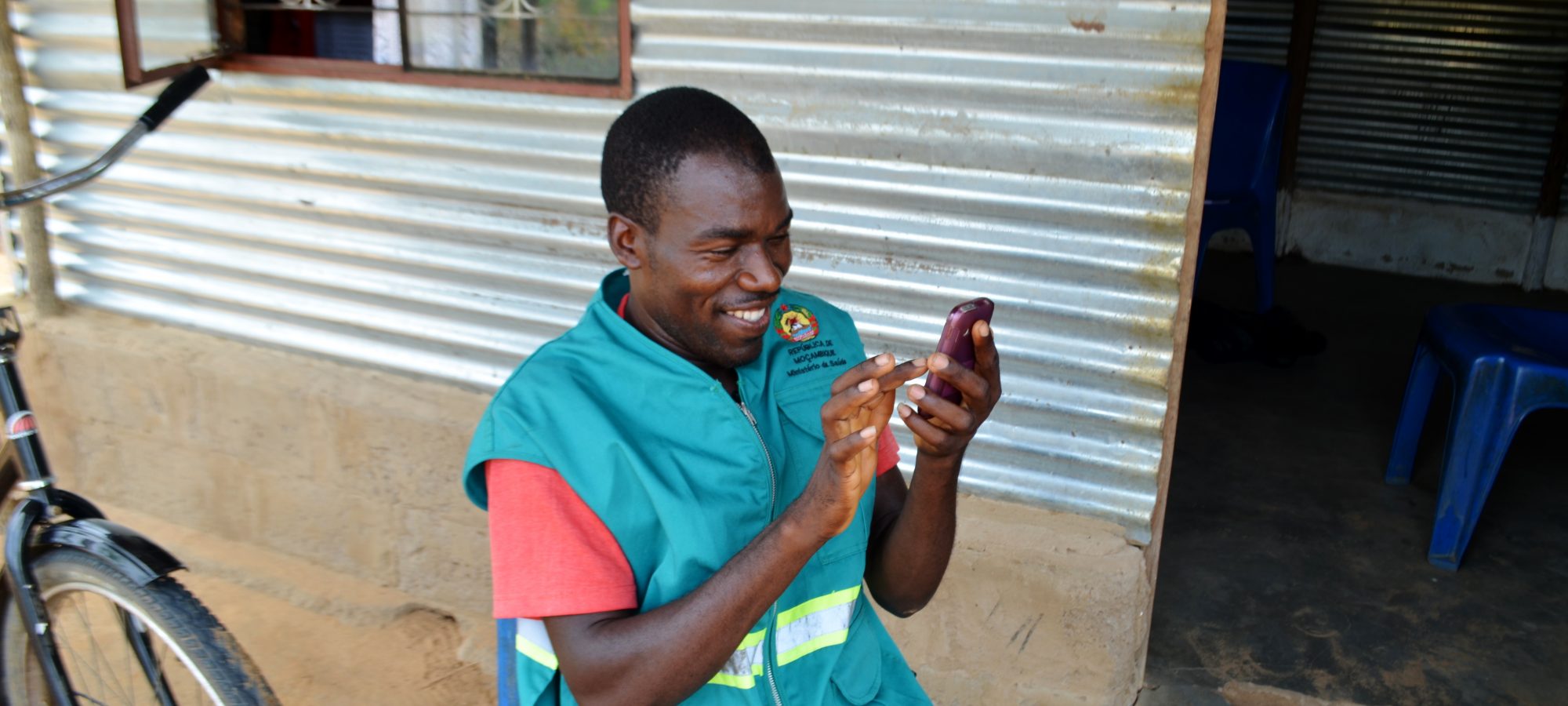Mozambique’s health challenges are immense: over one third of under-five deaths are attributable to pneumonia, diarrhoea and malaria. In 2017, the country had the third highest malaria burden worldwide according to World Health Organization statistics. With nearly half the population living below the poverty line and those in rural communities lacking access to basic healthcare services, the work of Mozambique’s 5,400 community health workers (CHWs) is vital.
To improve the quality of the healthcare services they provide, Malaria Consortium, the Ministry of Health and Unicef developed the upSCALE platform in 2016, based on our inSCALE pilot project. The platform involves a smartphone app that supports CHWs’ decision making and enables them to automatically report against key indicators, while their supervisors use a tablet-based app to monitor and assess their performance.
upSCALE links CHW data with the District Health Information System (DHIS2) for near real-time synthesis and analysis at various levels of Mozambique’s health system. While there are many benefits, the planned nationwide rollout by 2021 also brings a myriad of challenges in maintaining the necessary inventory of equipment at the community level.
Keeping devices up and running in the field
The upSCALE application is power-intensive, which is problematic for CHWs using solar chargers that rarely provide more than 65 percent charge. With an average of four hours of autonomy, CHWs tend to run out of battery during the day, hampering their consultations.
As the conditions CHWs work in can be rough, device breakdowns are much more frequent in the field than in an office setting. For supervisors, the tablets’ larger screens make it easier to carry out competency assessments, yet their size also prohibits them from carrying the devices in their pockets, which makes it more likely they will be dropped and damaged. While the lifespan of a mobile phone was estimated at three years at the start of the programme, our experience has shown that devices only last two years on average in the field.
Most commonly, smartphones show LCD defects, button malfunctions, and damage to touchscreens and charging ports. The repair time and cost vary depending on the type of malfunction and whether spare parts are available in country. By outsourcing hardware repairs to skilled local providers, we were able to reduce 3–6 month repair times to less than one month. However, when spare parts need to be imported, repairs can still take up to two months.
Strategic procurement and a maintenance plan are key
To help CHWs make it through their daily activities and register all data successfully, they should have a high quality power bank at their disposal. The cost-effectiveness of acquiring more powerful solar chargers also needs to be researched further.
As the devices are used intensively in the field, accessories like screen protectors and covers are vital. While an initial cost-containment approach did not consider protection accessories to be essential, our experience teaches us that they could have reduced the maintenance costs and amount of problems encountered.
To avoid unforeseen costs, project budgets should take into account that 15 percent of the equipment will likely need to be renewed annually. In addition, it would be appropriate to allocate 15 percent of the budget to cover maintenance costs. Common breakdowns can be remedied quickly by maintaining a stock of spare parts and replacement batteries. We also recommend opting for phone models that are widely available to make purchasing accessories in the domestic market easier.
When all else fails, one or two back-up or replacement devices should be available per district. This way, CHWs and their supervisors are not left without a device for long periods of time and can continue their work as usual.
Read more
Insight brief: Equipment challenges in rolling out mobile health solutions
Lien Santermans is Publications Officer at Malaria Consortium
